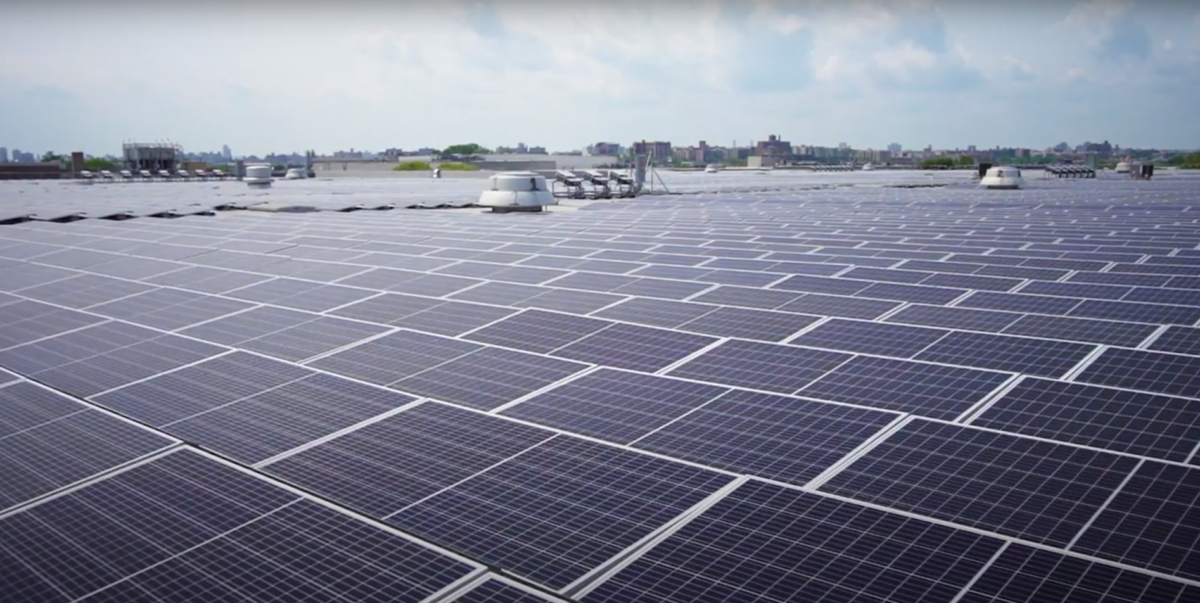Across the nation, the distribution grid is deadlocked. While headlines discuss supply chain bottlenecks or inflate communities’ hesitancy to build solar and wind farms on their land, the largest reason for this deadlock involves interconnection.
Interconnection, or the process of acquiring a utility’s permission to connect to the local distribution grid, threatens to derail tremendous progress being made across the country to build out innovative types of energy, including community solar, that offer equitable access to clean energy. Queues around the country are flooded with applications that overwhelm utilities, and the backlog threatens states’ 2030 climate goals.
The good news is many reasons for the current delays have a tenable solution. State utility commissions can help solve this significant challenge by working collaboratively and by improving data transparency.
The significance of interconnection for distributed, renewable energy generation cannot be emphasized enough. A rapid and cost-effective grid connection is crucial for project success. Unfortunately, interconnection delays and unpredictable grid upgrade costs have slowed community solar project development across the country.
In Maine, over 400 MW of projects have been delayed for more than a year due to cluster studies. Some of these projects might never be built due to the magnitude of delays, unexpected upgrade costs on the order of millions of dollars, or both. Utilities in states like Virginia, Delaware, and Maryland have overly broad technical planning limits that restrict where community solar can go, or that require prohibitively expensive protection equipment, known as Direct Transfer Trip, without considering alternatives.
A 2022 analysis estimated it would take 260 years to clear Minnesota’s interconnection backlog at Xcel Energy’s current pace of review. These serve as just a few examples displaying the prevalence of interconnection issues throughout the country.
Volume of applications
A major reason for delays is the sheer volume of interconnection applications utilities receive. Community solar offers an array of benefits, like reducing emissions, increasing energy equity, and improving grid resiliency. Additionally, federal policies are accelerating deployment through the EPA’s Solar for All fund and the Low-Income Communities Bonus and Investment Tax Credits.
As a result, newly opened programs often incur a flood of applications. Delmarva Power received over 250MW of interconnection applications over a two-day period when Delaware’s community solar program opened in 2021. The number of interconnection applications in Massachusetts nearly doubled in the three-year period following the launch of its programs. New interconnection applications can also overwhelm utilities that have not modernized and streamlined their review processes.
However, even for utilities that have taken important steps to improve the interconnection process, many still can’t manage the flood of application requests. Part of the influx problem is that many of these applications are for “zombie projects.” A “zombie” project is a project that turns out to be infeasible to build — often because of information that the developer couldn’t have known without submitting an interconnection application in the first place.
Most utilities provide very little actionable information about the best interconnection locations on their distribution system in advance of submitting an interconnection application. As a result, project developers must rely on the interconnection application process as a prospecting tool, seeking to test out — through trial-and-error of application submissions — which grid locations might be suitable to interconnect. Any project could be viable, but the developer simply doesn’t know until they apply for interconnection.
Zombie projects
The end result is that interconnection queues are full of test project requests that ultimately aren’t viable — affectionately referred to within the industry as “zombie projects.”
The best way to get rid of zombie projects is to ensure project developers have the right information to put forward a well-founded interconnection application. Utilities and regulators can help drive this change in several ways. First, they can be required to publish hosting capacity maps that contain distribution asset information and are updated at least monthly. While many states now require utilities to publish hosting capacity maps, these two pieces of information ensure the maps are useful and up to date. Good examples of this exist in California, Massachusetts, Minnesota, and Oregon.
Regulators can also ensure that interconnection queues are made publicly available. Substation and feeder names, application status (including withdrawals), interconnection cost estimates, and proposed in-service dates are especially useful details to include. Examples of states and utilities that provide this information today include Duke Energy, Hawaiian Electric Companies, Massachusetts, New York, and Xcel Energy.
Well-designed hosting capacity analyses and interconnection queue reports can significantly reduce the number of speculative interconnection applications. This is readily available information, and making it public would reduce the utilities’ duplicative efforts and workload, which is funded by ratepayers. Regulators should require utilities to adopt these best practices for the benefit of utility customers, and because states’ clean energy goals depend on it.
As the number of distributed energy resources blossom — including but not limited to community solar projects — these new installations will continue to seek to interconnect to the distribution system, and this kind of data transparency will be critical to keep the zombies at bay.

Sam Weaver is the interconnection and grid integration policy director at the Coalition for Community Solar Access (CCSA).
The views and opinions expressed in this article are the author’s own, and do not necessarily reflect those held by pv magazine.
This content is protected by copyright and may not be reused. If you want to cooperate with us and would like to reuse some of our content, please contact: editors@pv-magazine.com.








By submitting this form you agree to pv magazine using your data for the purposes of publishing your comment.
Your personal data will only be disclosed or otherwise transmitted to third parties for the purposes of spam filtering or if this is necessary for technical maintenance of the website. Any other transfer to third parties will not take place unless this is justified on the basis of applicable data protection regulations or if pv magazine is legally obliged to do so.
You may revoke this consent at any time with effect for the future, in which case your personal data will be deleted immediately. Otherwise, your data will be deleted if pv magazine has processed your request or the purpose of data storage is fulfilled.
Further information on data privacy can be found in our Data Protection Policy.